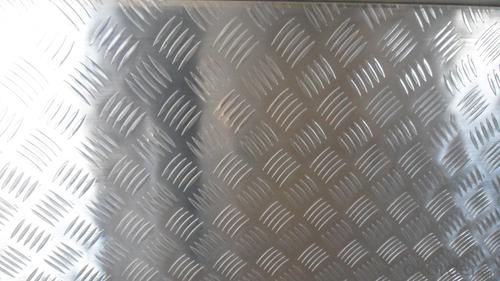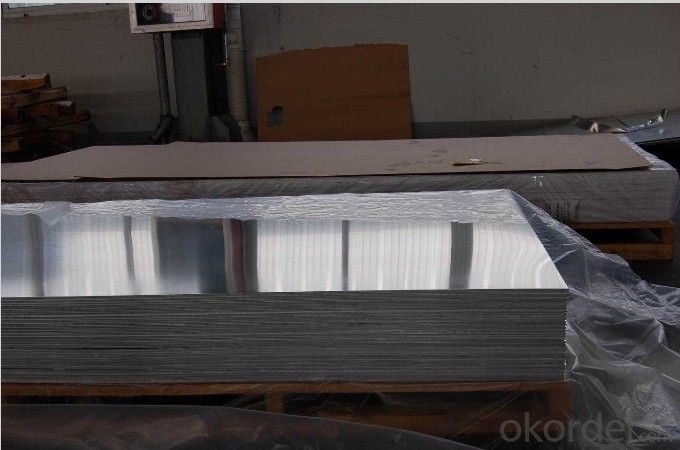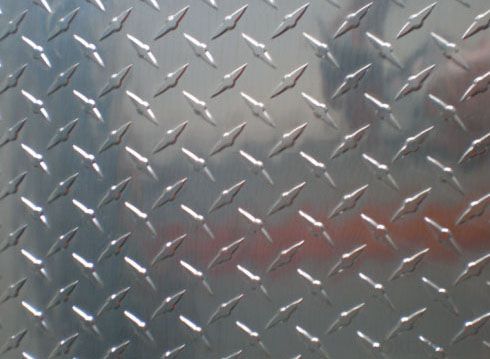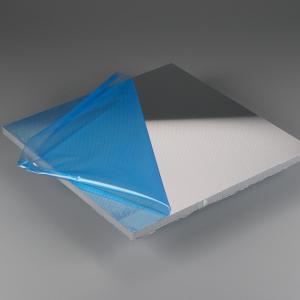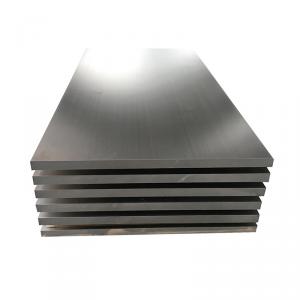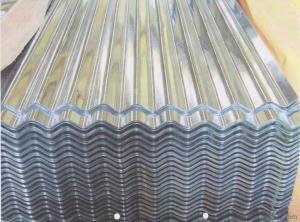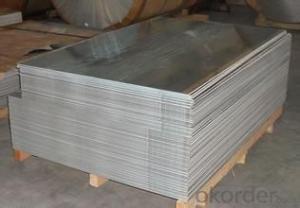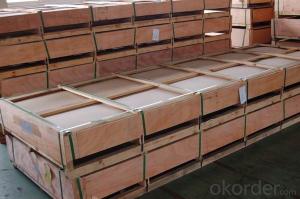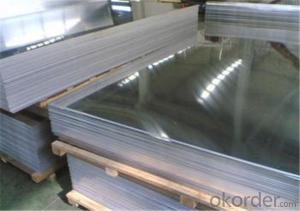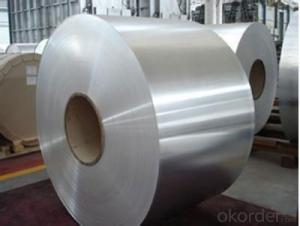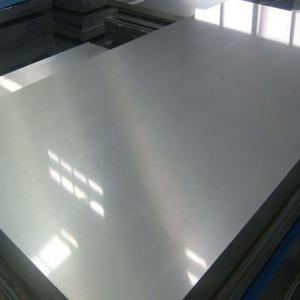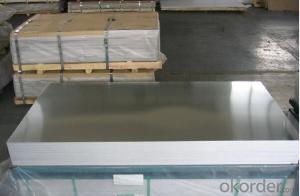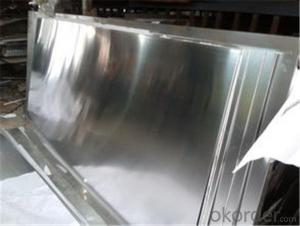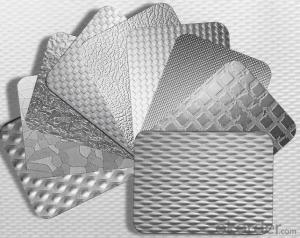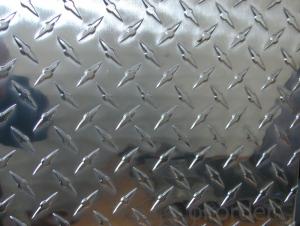30 Gauge Aluminum Sheets for Solar Energy 1050 1060 1070
- Loading Port:
- Shanghai
- Payment Terms:
- TT OR LC
- Min Order Qty:
- 5 m.t.
- Supply Capability:
- 20000 m.t./month
OKorder Service Pledge
OKorder Financial Service
You Might Also Like
Specification
Aluminum Sheet for Making Aluminum Composite Panel
Aluminum sheet specifications:
1) Alloy : 1050 1060 1070 1100 2024 3003 3004 3105 3A21 5005 5052 5083 5754 5182 5454 5456 6061 6063 7075 8011 etc
2) Temper: O/H12/H14/H1/H18/H32/H34/H36/H38//H111/H112/H116/H321/T6/T651/T3/T351 etc
3) Thickness: 0.1mm to 300mm
4) Width:20mm to 3300mm
5)Length: ≤ 12000mm
6) Protective film can be added
7) Production Line: DC and CC production line
Discription:
Width: 50-800mm
Thickness: 8-25mic
Length: 3-300m
Character:
High-temperature sterilization
Made of advanced food grade alu material,no pollution
Eco-friendly, recoverable and recyclable
Application:
widely used for food cooking, freezing wrapping, storing etc, the main application are for household and catering, which are targeting for retail market and food service market, such as hypermarket, chain store and hotel, restaurant etc.
Packing:
One roll in an individual box or printed PP bag
Certain quantities in a standard carton
Depends on customer’s request
Service
1. We have the good and professional team, have a good after-sales service.
2. Accept any drawings or your samples to develop new product.
3. Offer relateive technical support,quick response,all your inquire will replied within 24 hours.
4. OEM, buyer design, buyer label services provided.
5. Have the certification of ISO 9001, SGS.
6. Special discount and protection of sales area provided to our distributor.
FAQ
Q1:Do you provide sample? How many days will samples be finished?
Free samples will be provided if needed, but customers should undertake shipping cost or freight charges, samples will be finished in 5-7days
Q2: Can we visit your factory?
Welcome to our factory at any time.
Q3: Complaint solving process
Finding your salesman—Salesman provide you the solution (If it’s our responsibility, we will resend substitutes or return money or provide discount for your next order, etc.; If it’s shipping company’s responsibility, we will also help you until the problem is resolved.) —If salesman can’t solve your problem, please call our manager .
Q4: Delivery time
3~30working days after confirming the payment. If the order is urgent, we will push our workers to finish in advance.
Q5: What's your MOQ?
Normally 8MT are requested as the minium order quantity ,we shall give
additional instructions in special circumstances.
Q6: What are the terms of payment and currencies do you accept?
T/T or L/C is accepted, currently we appreciated your payment through
USD,EUR, RMB
Q7: Do you accept customized orders?
Yes, we do. Your customized orders are always welcomed. Please kindly offer us your samples or drawings, so that we can customize the products according to your preferences. About any further detail, please feel free to contact us.
Q8: What information should I let you know if I want to get a quotation?
Your detailed requirements regarding the products's dimensions, including shape, thickness, top out (length*width*height), and your order quantity are highly appreciated if you want further information about our quotation
Q9: How about the mass production?
The lead time of mass production depend on quantity, usually 25-30days (20FT) .
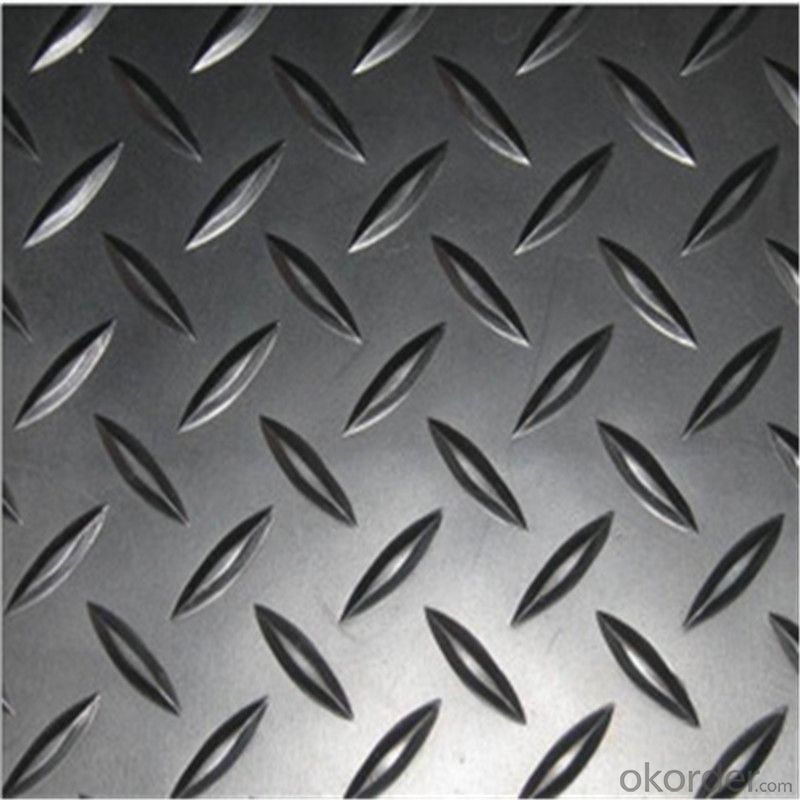
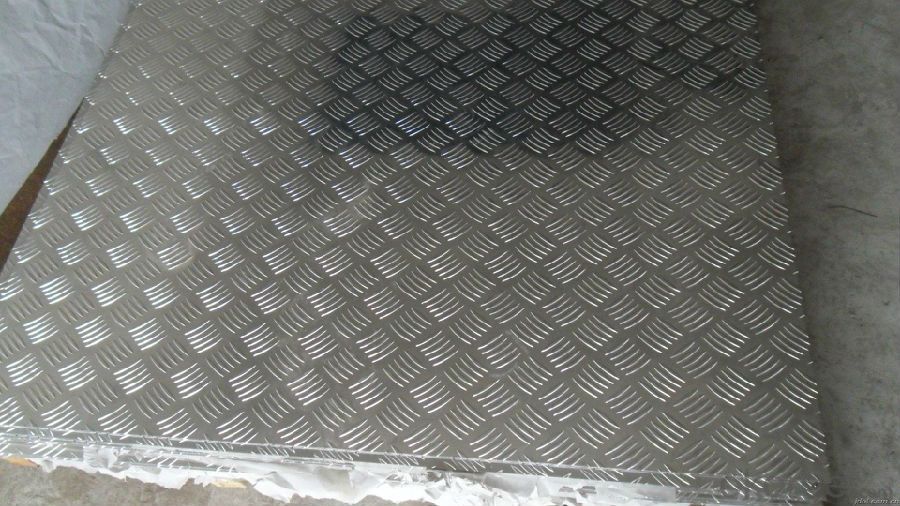

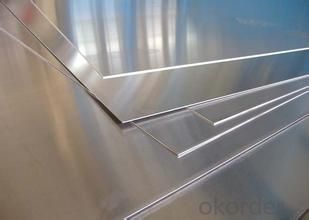
- Q: Are aluminum sheets suitable for pharmaceutical packaging?
- Indeed, aluminum sheets are apt for pharmaceutical packaging. The pharmaceutical industry extensively utilizes aluminum owing to its distinctive attributes. As a lightweight material, it offers exceptional safeguarding against moisture, oxygen, and light. Consequently, it becomes an ideal choice for packaging delicate pharmaceutical products that necessitate superior protection and stability. Additionally, aluminum sheets exhibit remarkable resistance to corrosion and boast commendable heat conductivity, facilitating efficient heat sealing in the packaging procedure. Moreover, aluminum is non-toxic and non-reactive, guaranteeing the safety and soundness of pharmaceutical items. In summary, aluminum sheets emerge as a dependable and frequently employed substance for pharmaceutical packaging.
- Q: What are the different methods of bending aluminum sheets?
- There exist multiple techniques for bending aluminum sheets, each possessing its own merits and limitations. Some frequently employed approaches include: 1. Press Brake Bending: This method entails securing the aluminum sheet between a punch and a die on a press brake machine. Force is then applied through the punch, which pushes against the die to bend the sheet. Press brake bending is most suitable for high-volume production and ensures accurate and consistent bends. 2. Roll Bending: Also referred to as the three-roll bending process, this technique employs a set of three rollers to gradually shape the aluminum sheet as desired. Roll bending is effective for creating cylindrical or conical forms and finds applications in industries such as automotive and aerospace. 3. Stretch Bending: In this method, the aluminum sheet is clamped at both ends while a stretching force is applied in the middle. This results in both elongation and bending of the sheet, yielding a curved shape. Stretch bending is commonly utilized to produce curved profiles with a smooth and uniform finish. 4. Heat Bending: By subjecting the aluminum sheet to heat, it becomes more malleable and can be easily shaped into desired forms. Heat bending is often carried out using a heat gun or an oven to soften the metal, followed by manual or mechanical bending. This technique is beneficial for crafting intricate and complex shapes. 5. Incremental Bending: This technique involves bending the aluminum sheet in multiple steps or increments, with the bend angle gradually increasing after each step. Incremental bending provides greater control over the bending process and is commonly employed for forming U-shaped or V-shaped bends. 6. Roll Forming: In roll forming, the aluminum sheet is fed through a series of rollers, each bending the sheet a little more. This continuous process is well-suited for producing long and consistent bends, commonly seen in the manufacturing of aluminum profiles and extrusions. It is important to note that the choice of bending method depends on various factors, including the desired bend angle, the thickness and grade of the aluminum sheet, the required precision, and the production volume.
- Q: Can the aluminum sheets be used for soundproofing applications?
- Yes, aluminum sheets can be used for soundproofing applications. Aluminum is a good conductor of sound, but when used in combination with other sound-absorbing materials or in soundproofing structures, it can effectively reduce noise transmission.
- Q: Can the aluminum sheets be used for manufacturing chemical storage tanks?
- Yes, aluminum sheets can be used for manufacturing chemical storage tanks. Aluminum is a versatile material that offers several advantages for this purpose. It is lightweight, corrosion-resistant, and has high strength-to-weight ratio. These properties make it suitable for storing various chemicals safely. Additionally, aluminum can be easily formed into different shapes and sizes, allowing for customization of storage tanks to meet specific requirements. However, it is important to consider the type and concentration of chemicals being stored, as some chemicals may react with aluminum. In such cases, appropriate coatings or linings may be necessary to prevent any chemical reactions.
- Q: Are aluminum sheets suitable for chemical processing applications?
- Aluminum sheets are a great choice for chemical processing applications. They are widely used in various industries, including chemical processing, due to their versatility. One of the reasons aluminum is preferred is because it has excellent corrosion resistance properties. This makes it ideal for applications that involve exposure to chemicals and corrosive environments. Aluminum sheets can resist many acids and alkalis, including common chemicals like sulfuric acid, hydrochloric acid, and sodium hydroxide. The reason aluminum is so resistant to corrosion is because of the thin oxide layer that forms on its surface. This layer acts as a barrier against chemical attacks and can quickly reform if damaged, providing continuous protection to the metal underneath. Additionally, aluminum is lightweight, has high thermal conductivity, and can be easily shaped and sized, making it a popular choice for chemical processing equipment and components. In chemical processing applications, aluminum sheets are often used for storage tanks, heat exchangers, piping systems, and other equipment that comes into contact with chemicals. They can withstand high temperatures and pressures, making them suitable for various processing conditions. Furthermore, aluminum is non-toxic, non-magnetic, and has excellent electrical conductivity, which can be advantageous in certain chemical processes. However, it's important to consider the specific chemical environment and conditions when choosing aluminum sheets for chemical processing applications. Some aggressive chemicals, like strong bases or highly oxidizing acids, may require additional protection or alternative materials. It's recommended to consult with experts or engineers who are familiar with the specific chemical processes and conditions to ensure that aluminum sheets are suitable for a particular application.
- Q: What is the hardness of aluminum sheets?
- The hardness of aluminum sheets may differ based on the particular alloy and temper it has undergone processing to. Aluminum alloys are usually evaluated using the Rockwell hardness scale or the Brinell hardness scale. Typically, pure aluminum exhibits a low hardness rating, approximately 20-30 on the Rockwell B scale, whereas certain aluminum alloys can achieve a hardness level of up to 70 on the Rockwell C scale. However, it is essential to recognize that the hardness of aluminum can be further adjusted through different heat treatment methods, like annealing or tempering, which can have a significant effect on its ultimate hardness.
- Q: This question asks for methods to protect aluminum sheets from damage during the installation process.
- <p>To prevent damage to your aluminum sheets during installation, follow these steps: Use protective gloves to avoid scratches from hand contact. Handle the sheets with care, especially at the edges and corners. Keep the surface clean and dry to prevent any dirt or moisture that could cause damage. Use appropriate tools designed for aluminum to avoid marring the surface. Ensure the installation site is free from debris that could cause scratches or dents. Install the sheets in a controlled environment to avoid exposure to harsh weather conditions. Finally, consider using a protective film or cover on the aluminum sheets until they are fully installed.</p>
- Q: Can aluminum sheet be used for roofing?
- Yes, aluminum sheet can be used for roofing. Aluminum is a popular choice for roofing due to its numerous advantages. Firstly, aluminum is lightweight, making it easier to install and reducing the load on the structure of the building. Secondly, aluminum is highly durable and resistant to corrosion, which means it can withstand harsh weather conditions, such as heavy rain, snow, and UV radiation. Additionally, aluminum is non-combustible, making it a safe choice for roofing. Furthermore, aluminum is an environmentally friendly material as it is 100% recyclable, reducing its impact on the environment. Overall, aluminum sheet is a reliable and efficient option for roofing applications.
- Q: Can aluminum sheets be anodized?
- Yes, aluminum sheets can be anodized. Anodizing is an electrochemical process that creates a protective oxide layer on the surface of the aluminum. This layer enhances the metal's corrosion resistance, durability, and appearance. Anodizing is commonly used in various industries such as automotive, aerospace, and construction to provide a protective coating and improve the aesthetics of aluminum sheets. The process involves immersing the aluminum sheet in an acid electrolyte solution and passing an electric current through it, causing oxygen ions to bond with the aluminum atoms and form the oxide layer. This layer can be further enhanced with the addition of dyes or pigments to create different colors and finishes. Overall, anodizing is a versatile and effective method for treating aluminum sheets.
- Q: Are aluminum sheets suitable for automotive heat shields?
- Certainly! Automotive heat shields can indeed utilize aluminum sheets. Aluminum is an exceptional option for heat management in automotive applications due to its lightweight nature and impressive conductivity. Its high melting point and excellent thermal conductivity properties allow it to efficiently absorb and disperse heat produced by the vehicle's engine, exhaust system, and other heat sources. Furthermore, aluminum sheets are easily moldable and can be crafted into diverse sizes and designs, making them adaptable for various automotive heat shield purposes. In summary, aluminum sheets offer an economical and effective means of safeguarding vulnerable components from heat-related harm within automotive systems.
Send your message to us
30 Gauge Aluminum Sheets for Solar Energy 1050 1060 1070
- Loading Port:
- Shanghai
- Payment Terms:
- TT OR LC
- Min Order Qty:
- 5 m.t.
- Supply Capability:
- 20000 m.t./month
OKorder Service Pledge
OKorder Financial Service
Similar products
Hot products
Hot Searches
Related keywords






